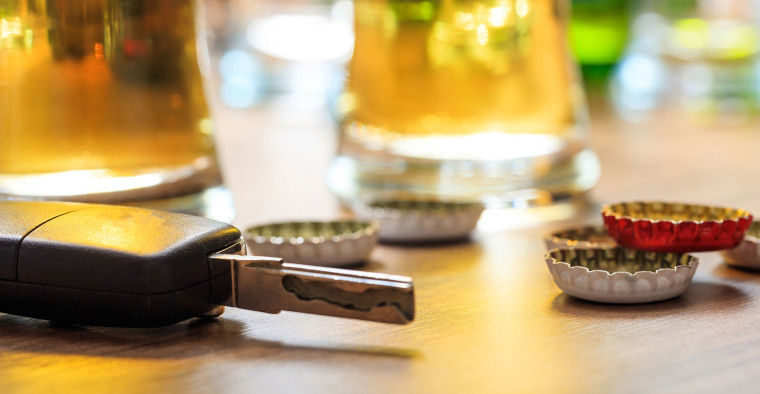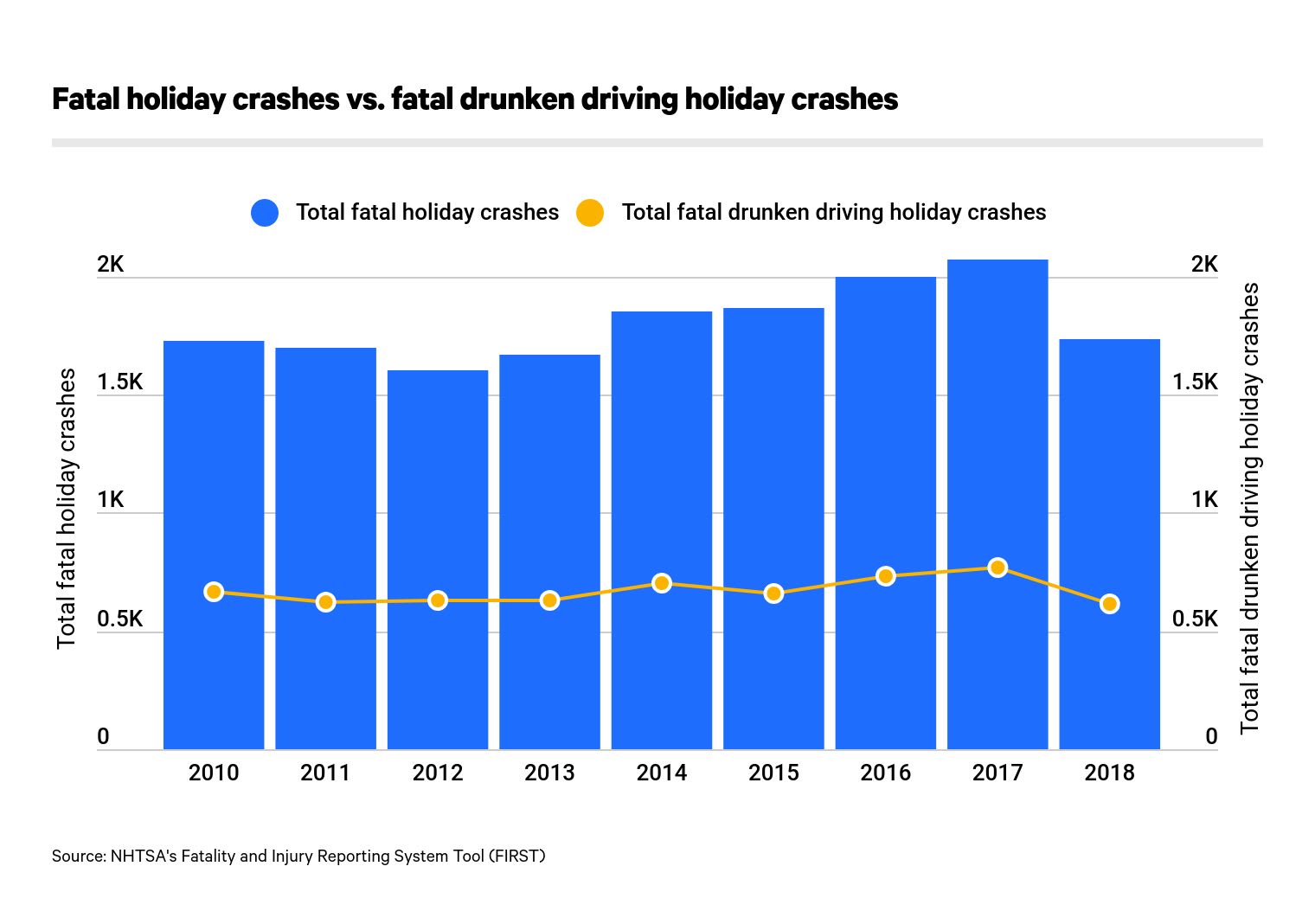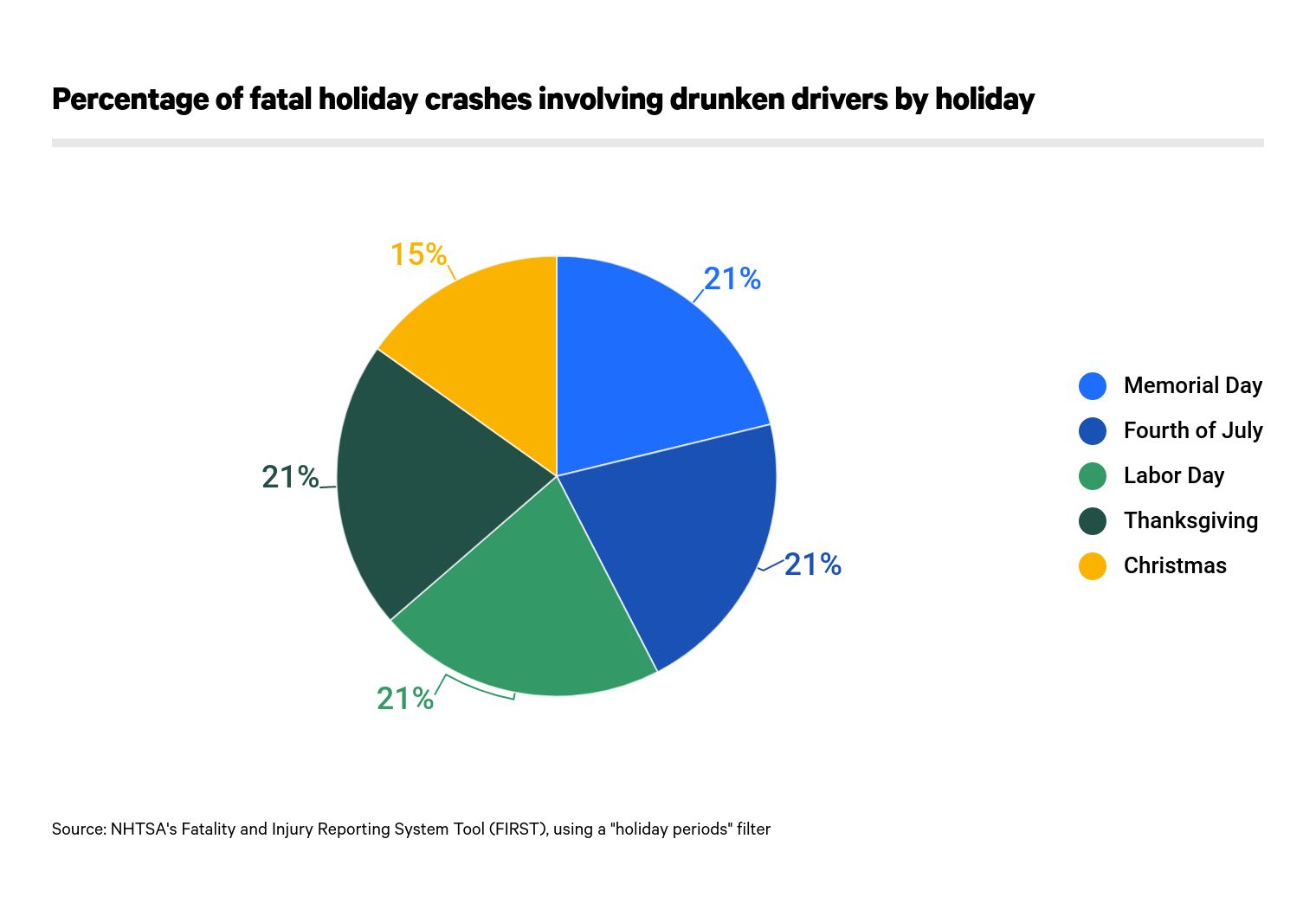Auto Insurance
Fatal Drunken Driving Crashes Are a Persistent Holiday Threat

More than 6,000 fatal crashes in the U.S. during the holidays stemmed from drunken drivers, or 667 on average per year, from 2010 to 2018. In that same period, more than 6,700 people were killed in these holiday crashes.
With Thanksgiving approaching, ValuePenguin analyzed National Highway Traffic Safety Administration (NHTSA) data to uncover the risks that drivers face from fatal drunken-driving crashes over the holidays. The NHTSA's data encapsulate crashes that occurred on Christmas, Thanksgiving, Labor Day, the Fourth of July and Memorial Day. Each of these periods — besides Christmas — accounted for an equal share of the total number of fatal drunken-driving crashes during the holidays.
ValuePenguin calculated that 112 people are killed per 100 drunken-driving crashes during holidays over the course of the year.
Key findings
- Drunken drivers caused 6,007 fatal crashes during the holidays from 2010 to 2018. Fatal drunken-driving crashes made up 37%, on average, of holiday-related fatal crashes in this period.
- The number of fatal drunken-driving crashes during the holidays decreased from 663 in 2010 to 611 in 2018. During this time span, though, 667 fatal holiday crashes yearly, on average, were attributed to drunken driving.
- Most holidays accounted for a 21% share of the total number of alcohol-induced fatal car crashes from 2010 to 2018. However, Christmas was the holiday when the fewest fatal car crashes occurred.
- 27% of fatal drunken-driving crashes on holidays in this period happened on state highways. Local roads were the second-most perilous type of road, accounting for a quarter of these types of fatal crashes.
- Drunken-driving crashes resulted in 6,704 deaths during the holidays from 2010 to 2018, with an average death rate of 112 per 100 accidents.
- Texas and California saw the greatest number of fatal drunken-driving fatalities on holidays during this period. Meanwhile, Harris County, Texas, was the county with the greatest number of fatal drunken-driving crashes on holidays.
Fatal drunken-driving crashes made up more than one-third of holiday-related fatal crashes from 2010 to 2018
Of the total number of fatal crashes during the holidays from 2010 to 2018, 6,007 were attributed to drunken driving. Fatal crashes that involved alcohol amounted to 37% of the 16,205 total cases that were caused by drunken drivers during holidays.
Over the course of these years, drunken-driving crashes never made up less than 35% of the total number of deadly collisions during the holidays. The number of fatal crashes involving alcohol-impaired drivers only fell by 52 from 2010 to 2018. However, while at its highest point the share of fatal crashes involving drunken drivers represented 39% of all fatal crashes during the holidays, that number shrank to its lowest point in 2018.

Overall, drunken-driving crashes on holidays made up just a fraction of the total number of fatal collisions that occurred throughout the entire year. From 2010 to 2018, there were 284,312 fatal crashes, meaning only 2% happened on holidays and were caused by alcohol-impaired driving.
Crashes were generally evenly distributed across the five holidays we analyzed. All the holidays that are listed by the NHTSA (except for Christmas) held a 21% share of the total number of fatal crashes. Christmas only had 15% of the total number of fatal collisions.

Of all the types of roadways in the country, state highways are most often the scene of fatal crashes during holidays where alcohol-impaired driving is involved. ValuePenguin found that 27% of all these occurrences happened on state highways. These types of fatal crashes are nearly as likely to happen on local roadways, as one-quarter of fatal crashes during the holidays from 2010 to 2018 took place on these roadways.

Fatalities in drunken-driving crashes during the holidays fell by just 4% from 2010 to 2018
During this time period, 745 people, on average, were killed each year in these crashes. As was the case with the number of fatal crashes, there wasn't a strong downward trend in the number of deaths. In fact, per-year fatalities reached a high in 2017, when there were 859 deaths.
Even at the highest point, the number of people who were killed in drunken-driving car crashes during the holidays amounted to just 8% of the total fatalities that were attributable to alcohol-impaired driving in that year. From 2010 to 2018, the number of holiday-related fatalities dipped to 7% of the year-round total.
Drunken-driving collisions that occur during the holidays could be more lethal than the drunken-driving crashes that happen during the rest of the year. While 112 people were killed per 100 crashes during holidays, the number of deaths per 100 collisions over the course of an entire year was lower. For every 100 fatal drunken-driving crashes, there were 110 fatalities.

While younger people are the most likely to be killed in holiday-related drunken-driving crashes, the youngest people didn't make up a substantial portion of fatalities in our analysis. Those 20 years old and younger only amounted to 11% of the total fatalities. Likewise, those 65 and older made up 7% of the fatalities.
People 21 to 64 made up 83% of the total fatalities caused by holiday-related drunken-driving crashes. One-quarter of holiday-related fatalities came from those 25 to 34. This demographic was matched by people between 45 and 64.
>>Drunken driving can raise the cost of your car insurance drastically.
California and Texas saw the highest numbers of fatal crashes and deaths, though every state experienced at least one death
It was most common for drivers in Texas and California to be involved in fatal holiday-related crashes caused by alcohol-impaired driving. From 2010 to 2018, 13% of the nation's drunken-driving fatalities during holidays happened in Texas, the only state that accounted for at least 10% of the national share of deaths. By comparison, drivers in California had a 9% share during the same time.
Two counties had far more deaths on holidays than others: Harris County, Texas, had the highest number of fatal crashes on Memorial Day (30), the Fourth of July (21) and Labor Day (20). In California, Los Angeles County saw 31 deaths on Thanksgiving and 22 on Christmas — the most for each of those holidays.
From 2010 to 2018 there were 2,485 fatalities caused by drunken driving on Thanksgiving and Christmas — 37% of the total number of holiday deaths during this time.
Rank | State | Deaths on Christmas | Deaths on Thanksgiving | % of national deaths for all holidays |
|---|---|---|---|---|
| 1 | Texas | 122 | 203 | 13% |
| 2 | California | 109 | 133 | 9% |
| 3 | Florida | 110 | 90 | 7% |
| 4 | Pennsylvania | 34 | 56 | 4% |
| 5 | North Carolina | 36 | 62 | 3% |
| 6 | Georgia | 47 | 50 | 3% |
| 7 | Ohio | 43 | 37 | 3% |
| 8 | South Carolina | 38 | 33 | 3% |
| 9 | Illinois | 33 | 48 | 3% |
| 10 | New York | 18 | 39 | 3% |
| 11 | Missouri | 18 | 43 | 3% |
| 12 | Michigan | 34 | 30 | 3% |
Percentages were rounded to the nearest whole number, so the totals don't add up to 100%. The District of Columbia had the lowest percentage at 0.1%.
Does car insurance cover drunken driving?
If you drive drunk and cause a collision, a typical auto insurance policy will pay for the expenses following injury or death to someone else with its bodily injury liability portion. Alternatively, in some cases a person's personal injury protection (PIP) may offer protection, provided the driver is carrying this type of protection and the claim isn't denied.
The liability portions of a policy pay for property damage or injuries you cause to someone else, including the funeral expenses that result from a death. This type of coverage is mandatory in most states before a car can be legally operated.
Some policies include personal injury protection, also called no-fault coverage. Ordinarily, this type of insurance pays for a range of expenses following a crash, including lost wages, medical bills and funeral expenses no matter who's responsible for the crash. But it's not uncommon for insurers to deny PIP claims made by the intoxicated driver for damages they caused to themselves or their car.
Methodology
ValuePenguin pulled data from the Fatality Analysis Reporting System, or FARS. This database is maintained by the National Highway Traffic Safety Administration. Using the filter provided by the agency, we retrieved numbers for accidents and deaths that happened during "holiday periods" of Christmas, Thanksgiving, Labor Day, the Fourth of July and Memorial Day.
